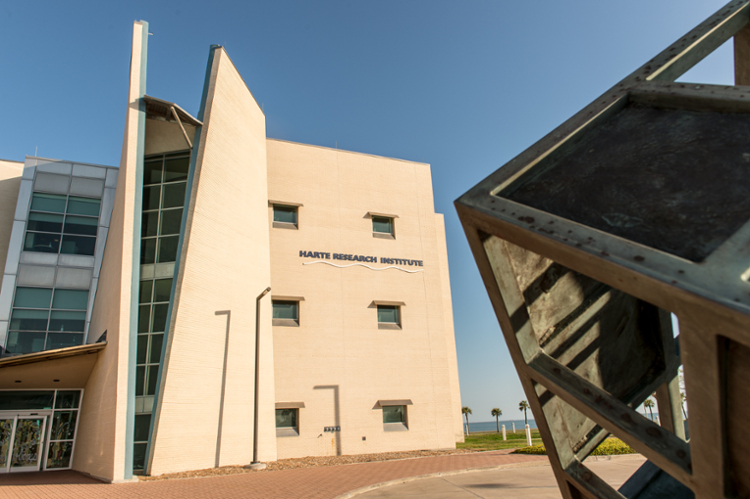Autonomy Research Institute: The Next Chapter for Lone Star UAS Center at TAMU-CC
CORPUS CHRISTI, Texas – The Lone Star UAS Center of Excellence and Innovation at Texas A&M-Corpus Christi has made a profound impact both on the ground and in the skies of the Coastal Bend. The center recently celebrated its 10th anniversary, marking a decade of significant advancements in drone research, not only in our region but across the nation. The growth now includes elevating the center to an institute, which also comes along with a significant name change. As of Monday, Aug. 19, the institute is now known as the Autonomy Research Institute (ARI).
“Autonomy Research Institute joins good company, as it is now one of three institutes on our campus with the Harte Research Institute and the Conrad Blucher Institute,” said Dr. Kelly M. Miller, TAMU-CC President and CEO. “Achieving institute status in just ten years is a significant milestone. It reflects not only the remarkable growth of its drone aviation research but also the overall advancement of our university.”
Mike Sanders, Executive Director of ARI, said the new name isn’t just about branding — it’s a strategic choice.
“We were purposeful in choosing the word autonomy as it highlights the growth of autonomous systems research beyond the air into other avenues including water and space,” Sanders said. “In addition, our shift to an institute means that we are better poised to help develop technology that will have significant impacts in many sectors of everyday life.”
In 2014, the Federal Aviation Administration (FAA) recognized ARI as one of only seven designated UAS test sites nationwide. Over the past decade, ARI’s drone research has evolved significantly, driving innovation and advancing our understanding of unmanned aircraft systems (UAS). A core focus of ARI’s work is assisting the FAA in safely integrating UAS into the national airspace system. This involves extensive safety testing for industry partners, which has led to practical applications in various sectors. For instance, ARI has supported research for pipeline inspections and deployed drones to support the inspection on Bob Hall Pier after Hurricane Hanna.
“The use of sensor equipped drones offers improved precise visual data that significantly enhances safety,” Sanders said. “Drones have also helped businesses identify critical problems before they cause a major issue, resulting in operational efficiency and substantial cost savings.”
Their work also has lifesaving applications. In 2022, the Texas State Legislature included funds for ARI to develop a disaster response and recovery capability, aimed at supporting emergency management and other public operations efforts across all levels of government. Through this initiative, ARI provides airspace awareness and aerial assessments of disaster sites, which gives rescue and recovery workers a better vantage point to see where their help is most needed. Before receiving these funds, ARI helped out in the recovery efforts during Hurricane Harvey, the Wimberley flooding, and Hurricane Hanna.
ARI has provided drones to help the Texas State Aquarium survey the coastline during frigid weather to locate and rescue cold-stunned turtles. ARI also does similar turtle recognizance work on the Padre Island National Seashore thanks to a first-of-its-kind federal permit.
Two of ARI’s most significant partnerships include NASA and the FAA’s Next Generation (NextGen) office. In 2019, they collaborated to study how multiple drones could operate in urban airspace, using downtown Corpus Christi as a testing ground. Drones navigated the tight spaces between tall buildings, with the goal of demonstrating a UAS Traffic Management (UTM) traffic management capability like the FAA’s system for planes. Since 2020, ARI has completed four NextGen projects, involving large UAS, autonomous aircraft, UTM, and a joint NASA/FAA concept called Advanced Air Mobility. The data collected will inform the future use of commercial drones and other autonomous aircraft.
“The application for this autonomous research is endless,” Sanders said. “Soon, we could see innovations such as air taxis — a fully autonomous aircraft system that transports passengers across a city via flight rather than car. It sounds far out, but it’s in our not-too-distant future.”
In addition to expanding its research capabilities, ARI has significantly grown its workforce and physical presence. Back in 2014, ARI employed only about a half-dozen full-time staff. Today, that number has risen to 42 full-time employees, supported by over a dozen student workers, with plans to potentially expand to more than 100 full-time employees within the next five years. ARI has also outgrown its headquarters in Flour Bluff, now occupying space at the Corpus Christi International Airport complex, where it maintains a storage area. Looking ahead, ARI will establish a second Mission Control Center in the university’s downtown building.
It appears the sky and beyond is the limit for ARI. To learn more, click here.






































